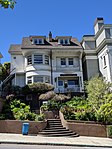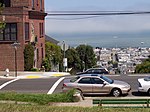Town School for Boys

Town School for Boys, located in San Francisco, California, is an independent day school for boys from kindergarten through the eighth grade. The school was established in 1939 by parents from the recently closed and privately owned Damon School, and in 1938–39 was known as the Tamalpais Junior School. Town School for Boys is considered a college preparatory institution for boys in San Francisco. The school is well respected nationally, and has a thriving teacher training program called the New Teacher Institute, founded in 1990. The enrollment of over 400 boys is divided into 9 grades, K - 8, with two classes per grade. While renovations took place in the 2013–14 school year, the school temporarily leased the space in the Palace of Fine Arts vacated by the Exploratorium.Notable faculty include Gurdon Woods, later head of the San Francisco Art Institute, and Robert Nowe, who was the inspiration for Canin's novel The Palace Thief, which was made into the film The Emperor's Club starring Kevin Kline.
Excerpt from the Wikipedia article Town School for Boys (License: CC BY-SA 3.0, Authors, Images).Town School for Boys
Jackson Street, San Francisco
Geographical coordinates (GPS) Address External links Nearby Places Show on map
Geographical coordinates (GPS)
| Latitude | Longitude |
|---|---|
| N 37.791852777778 ° | E -122.44011666667 ° |
Address
Town School for Boys
Jackson Street 2750
94115 San Francisco
California, United States
Open on Google Maps










